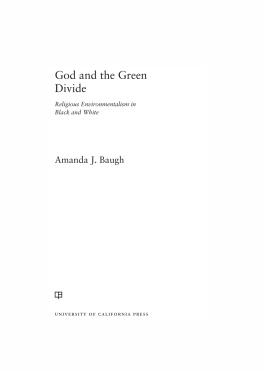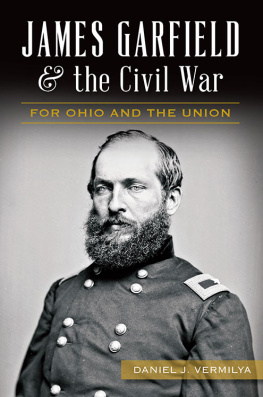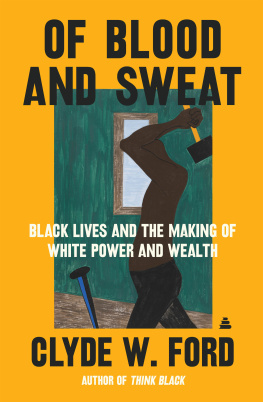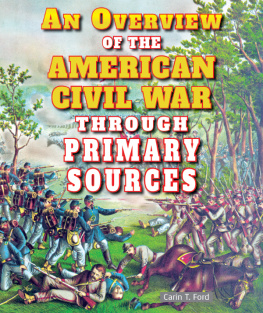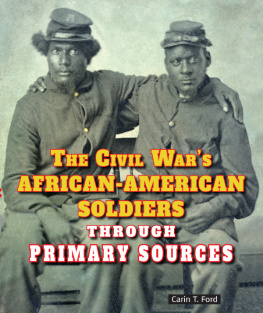2016 The University of North Carolina Press
All rights reserved
Set in Arno by Westchester Publishing Services
Manufactured in the United States of America
The paper in this book meets the guidelines for permanence
and durability of the Committee on Production Guidelines for
Book Longevity of the Council on Library Resources.
The University of North Carolina Press has been a member of the
Green Press Initiative since 2003.
Cover illustration: From Maria Goodell Frost, Gospel Fruits; or, Bible Christianity
Illustrated: A Premium Essay (Cincinnati: American Reform Tract and Book
Society, 1856), courtesy of the American Antiquarian Society.
Library of Congress Cataloging-in-Publication Data
Ford, Bridget, author.
Bonds of union : religion, race, and politics in a Civil War borderland / Bridget Ford.
pages cm(Civil War America)
Includes bibliographical references and index.
ISBN 978-1-4696-2622-2 (cloth : alk. paper)ISBN 978-1-4696-2623-9 (ebook)
1. OhioHistoryCivil War, 18611865Social aspects. 2. KentuckyHistory
Civil War, 18611865Social aspects. 3. United StatesHistoryCivil War,
18611865Social aspects. I. Title. II. Series: Civil War America (Series)
E525.F675 2016
973.71dc23
2015031950
Portions of this work appeared earlier in somewhat different form in Bridget Ford, Black Spiritual Defiance and the Politics of Slavery in Antebellum Louisville, Journal of Southern History 78, no. 1 (February 2012): 69106, and are reprinted here by permission of the publisher.
Preface
Abraham Lincoln spoke of bonds of union before audiences uneasy about the survival of the United States during tense moments in the 1850s. In the spring of 1854, adoption of the Kansas-Nebraska Act outraged Lincoln, for the new federal law would allow slaverys broad dispersion across new western states, despite long-standing political consensus that it should not. Although not an elected representative at the time, he took action, hoping to convince Illinois voters of the folly and injustice contained in Stephen Douglass Nebraska legislation. A regular visitor to the state library in Springfield over a number of weeks, Lincoln studied the general question of domestic slavery from the time of Americas founding. In the late summer and fall of 1854, Lincoln shared his conclusions in a public address that ran to some seventeen thousand words, judging from a published copy of the Peoria speech. None of Lincolns other speeches rivaled it in length.
Delivered to Illinois audiences, this passionate address represented new thinking for Lincoln. With congressional limits on slaverys extension legally in place before 1854, the nation was looking to the forming of new bonds of Union, Lincoln asserted, and a long course of peace and prosperity seemed to lie before us. But now, with slaverys perpetuity seemingly guaranteed by Douglass retrograde legislation, Lincoln predicted shocks, throes, and convulsions, or, in less metaphorical phrasing, collision and violence. This was because an eternal antagonism existed between the selfishness inherent to mastery over other human beings and the love of justice propelling opponents of slavery to act. This irreconcilability, combined with Douglass flawed popular sovereignty policy, meant that proslavery and antislavery partisans would bitterly contest every inch of new American territory. Lincoln recoiled at this future. In a year of dramatic shifts in voters political allegiances as a consequence of the Kansas-Nebraska Act, the 1854 Peoria speech gave evidence of a kind of antislavery conversion for Lincoln personally. Determined to extricate Americans from the curse of slavery, he injected new eloquence and moral power into his speeches. Evoking bonds of union untarnished by slaverys inherent violence was of a piece with that purposefulness.
The phrase bonds of union can sound stilted, if not archaic, to the modern ear. Today, elected leaders might draw on similar wording to add historical cachet, and wedding officiants can intone about the bond of union for solemn effect. Americans may recognize variants of the wording from the New Testament, for love is the perfect bond of union among believers in Christ.
In the nineteenth century, Americans used the phrase bonds of union in very specific ways. Protestants were deeply familiar with the wording, for a bond of union defined that invisible bond, connect[ing] each of them to Christ within a community of faith. To be sure, each of these examples comes from formal rather than casual or everyday expression: a church manual in the first example, an antislavery tract in the second, and a major political speech in the last. If the phrase bonds of union sounds affected today, even in the Civil War era its direct use was reserved for considerations of great import: establishing religious and political communities and protecting family love.
When nineteenth-century Americans drew on the language of human and political bonds, they clearly meant to call attention to serious matters requiring high resolve. Because Americans used the phrase as a summons to political purposefulness and careful thinking about human relations, it seemed to me a touchstone for understanding vitally important matters in the Civil War era. With rhetorical use of bonds of union as a starting point, then, I have tried to understand what Americans thought held them together in union when that relationship was severely tested.
But recall Lincolns Peoria speech from 1854: Americans were looking to the forming of new bonds of Union before acts of Congress gravely threatened this ongoing work. Though couched in rhetoric, this prompting speaks to Lincolns sincere sense that a moment of reckoning had arrived, and that Americans had the wherewithal to see slavery as alien both to their Constitution and to their history.
Lincolns research at the Springfield library in 1854, combined with his office seeking, might seem the work of an unusually dedicated individual. But his quest to define the true bonds of union was not unique. In fact, for almost three decades, from the 1840s to the end of the Civil War, diverse Americans labored mightily to comprehend what, if anything, held them together in one polity, a union no less. Their determined (if not stubborn) work to define Americans bonds of unionwithout the bonds of slaveryis the subject of this book.
This book describes Americans sustained efforts to imagine and foster bonds of union in an especially fractious region, the Ohio-Kentucky borderland. This region was riven by some of the countrys worst religious conflicts and racial violence between 1840 and 1860. Then, following the secession of southern states to form the Confederacy in the winter of 186061, this borderland area seemed on the brink of anarchy and civil dissolution even though the state of Kentucky remained loyal to the Union. But Confederate army advances, political party strife, and the chaotic unraveling of slavery in Kentucky severely tested white loyalties there. Though many Ohioans and Kentuckians inflamed hostility and distrust over and again throughout the era, some residents strained against the power of these animosities. This was particularly true in Cincinnati and Louisville, the two most significant cities in Ohio and Kentucky, respectively. Just under 150 miles distant from each other following the Ohio River, these two cities saw spectacular growth between 1840 and 1860. Amid the din of rapid urbanization, a remarkable set of individuals and societies created strong-enough bonds of union to weather the storms of religious, racial, and political violence. This book is foremost an effort to recover their work.


